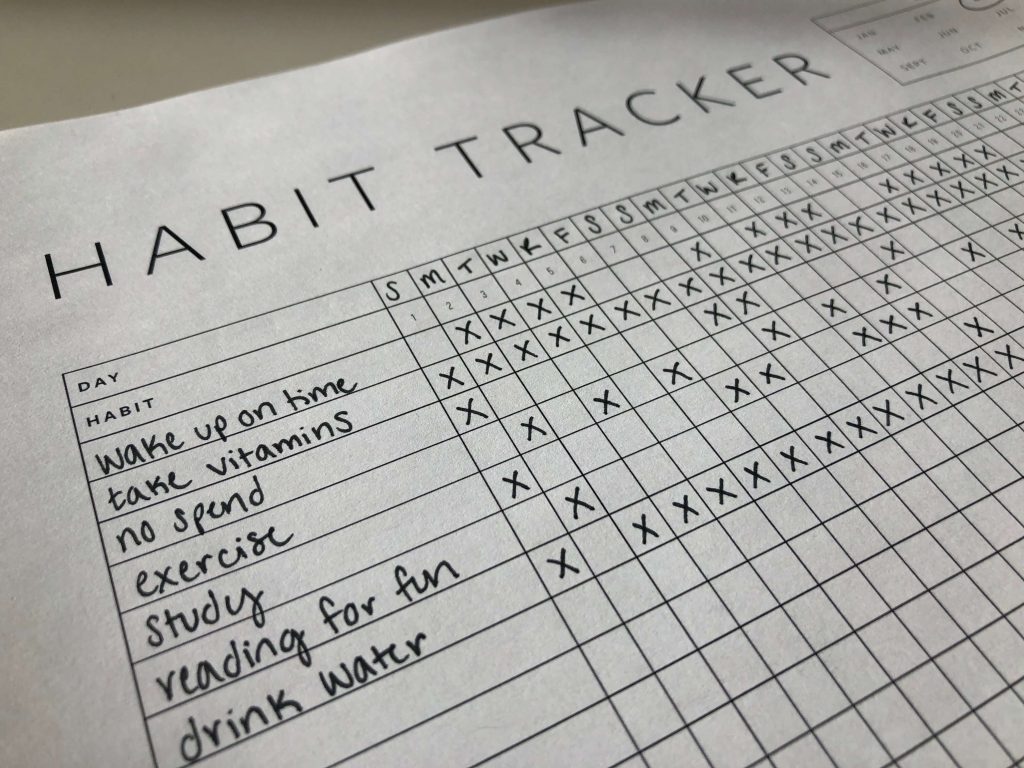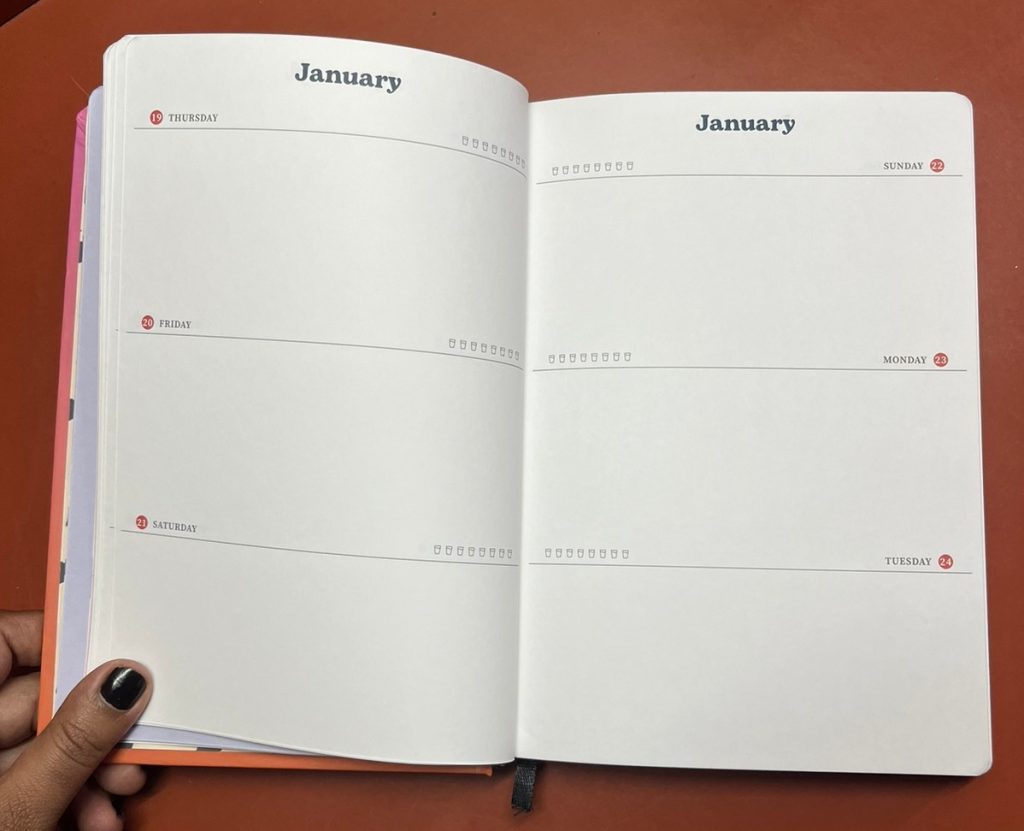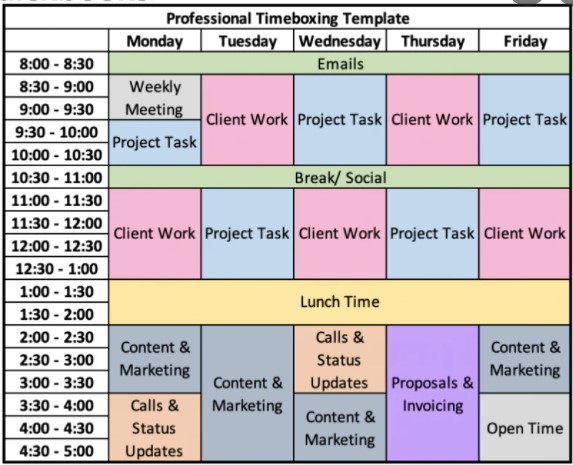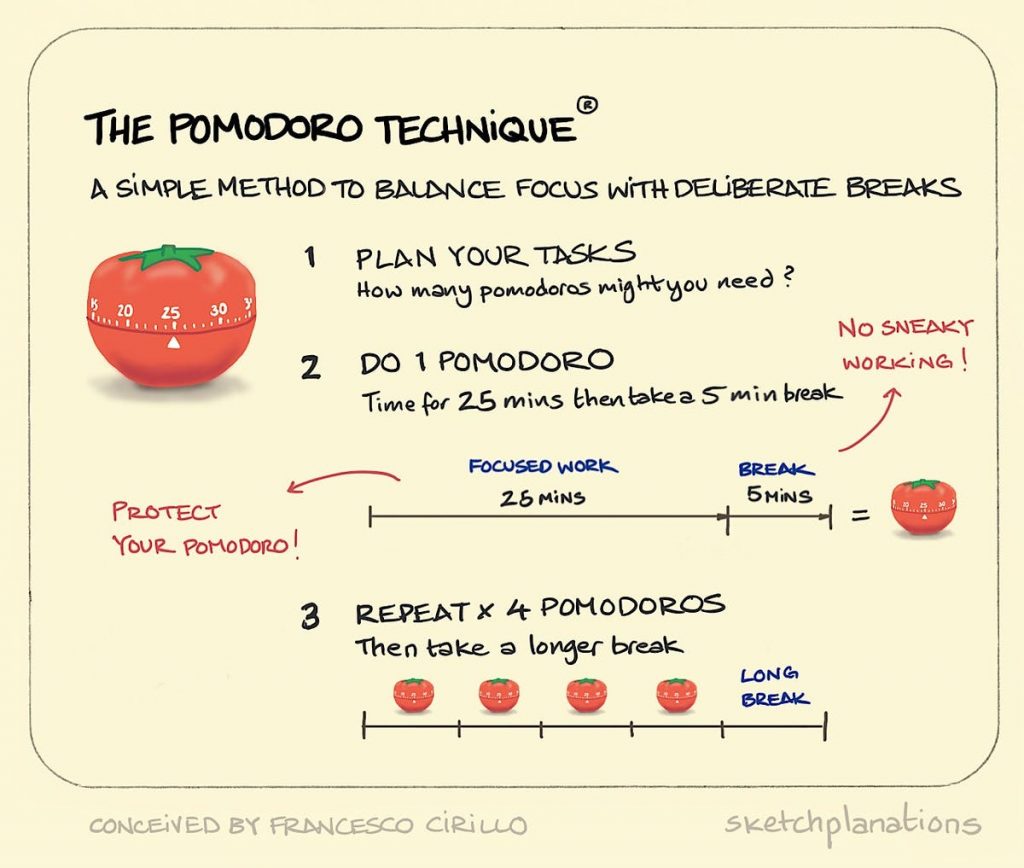We all have big dreams and want to fully utilise the 24 hours we get daily to get closer to them but most of us keep falling deeper into the pit of unproductivity each day. Anyone would prefer a good sleep, time out with their friends or a binge-watching session.
We chalk out our plans but while our work waits for us we endlessly and mindlessly scroll through our social media feeds.
Are you a planner or a doer? Do you and keep wishing to turn things around and get back on track to achieve all those life goals or new year resolutions or have they been carried forward to the next year?
I have some pro tips which will help you break your streak of laziness and get back to working towards fulfilling your goals without making it seem like a huge task! Say hello to your new BFF – productivity!
Table of Contents
1. Keep a habit tracker handy
Think of all those activities that you’ve been planning to make a part of your routine, list them down in your first column. Mark the other columns as the days of the month. Every day that you accomplish the tasks, put a big tick in the respective checkbox and every day that you fail to do so, put an equally big cross. This will give you a quick overview of your monthly performance. When you notice the streak of crosses along a line, you are automatically motivated to do that activity (even if it is just for the sake of putting a tick).

Use themes like ‘health’, ‘work’, ‘relations’, ‘academics’, ‘personal’ or anything else you like to make your habit tracker more inclusive.
You will notice the difference that comes from using a habit tracker, within your very first month! Print a free downloadable tracker or draw customised versions of it.
Get creative and colourful or keep it simple but I can assure you that making use of a habit tracker is guaranteed to change your life.
2. The classic ‘to-do list’ saves the day
This might sound like the biggest cliché but to-do lists work wonders to improve your productivity. It is the ultimate productivity tip that works but wait… there is a catch!
Contrary to general practice, to-do lists shouldn’t be made in the morning but the previous night instead, possibly just before going to bed.
This helps you realistically plan for the next day and even takes the stress off your mind before you fall asleep. You have the next day’s work cut out for you before you wake up. Thus, you can be more present and focus on your morning tasks in a much better fashion without the hurry or guilt to get to your work the moment you wake up.

We all have experienced that thrill of striking things off these lists. These small feelings of success can boost your motivation. You would often see a domino effect ultimately leading you to accomplish more tasks for the day than you would have otherwise.
You can check out this guide if you want to learn how to make a good checklist!
3. Making a MASTER to-do list
This list is different from the previous one because it does not focus on the deadline or the time aspect of the tasks.
In your master to-do list, you essentially list down every task you have to do. Reviewing this list from time to time makes sure you don’t forget any task – big or small without any reminders from others. Whenever you think of something, just list it down and keep your mind free from the hassle of remembering it because let’s be honest, how many of us really do remember something that momentarily pops up in our head and we think we’ll be able to effortlessly recall it later on?
4. Using a planner
If you can build the habit of working with to-do lists, you can even make a small upgrade to planners. These come in various options including annual, weekly, monthly and undated planners.

(This planner is from The Art Loom)
The set, pre-made structure of these planners makes scheduling super easy. The biggest advantage these (minus the undated planners of course) can boast of is allowing you the flexibility to move ahead and pen down your events or tasks on the relevant date. When you have your schedule marked like this, it becomes readily available for you to glance at, relieving you of the massive task of keeping a mental note of it at all times. The mental freedom makes you productive and ensures events don’t clash with one another.
5. Use the timeboxing method
Making a to-do list surely works but the secret ingredient for making the best to-do lists ever lies in the method of timeboxing. This method helps you shift from ‘task-based thinking’ to ‘time-based thinking’.
We often end up being stuck on a task we had mentally given possibly an hour to. At the end of the day, we look back frustrated having accomplished nothing but that one task (and sometimes not even that one). The best way to prevent this block is to dedicate a premeditated duration for something, also called making a timebox.
Schedule your tasks (and even breaks) by determining a start and end time for each and stick to it with great discipline. Writing the time allocated for a task next to it in your to-do list will enhance its efficacy.

Additional tip: Do not use round figures while timing yourself. This will prevent your brain from evading the deadline and will increase your chance of sticking to it. So, instead of saying “I’ll read a book from 9:00 pm – 10:00 pm,” say “I’ll read from 9:35 pm – 10:40 pm.“
6. Use the Pomodoro Technique
If you want to boost your productivity, implement the Pomodoro Technique. Formulated by Francesco Cirillo, this technique helps you break down a big task into smaller, more focused, doable tasks. This way, you don’t feel like you have a huge task pending that is going to take you hours to complete. I don’t know about you but when I see something like this, my fear becomes the biggest hindrance in starting off, thus leaving the work pending forever. Having smaller tasks helps me get started!
There are ample breaks between each task so whatever it is that I am procrastinating with, also find a dedicated time slot on my to-do list! This tricks my brain into letting me get work done because it knows about the frequent breaks I’ll get anyway! There isn’t a sudden burst of motivation that will soon dissipate but a consistent stream of motivation.

Now, how this technique works is like this:
Step 1: Set tasks of 25 minutes each.
Step 2: Use a Pomodoro Timer or a timer of your own to time yourself.
Step 3: Complete 1 pomodoro (1 task of 25 minutes).*
Step 4: Take a 5-minute break.
Step 5: After every 4 pomodoros, take a longer break (for 15-20 minutes).
Step 6: Repeat this cycle.
*Note: You should protect your pomodoro! If there is an interruption that distracts you from the task, technically you cannot count that pomodoro in your list of 4 pomodoros for the long break!
7. Procrastinate to get other work done

strange but true!
Now, this might not be the best advice out there (I deserve bonus points for self-awareness) but something that works great for me is getting other important work when I should be focusing on the main task. For example, if I have to shop for or pack something for an event and I am procrastinating, I try to clean my desk or organise my cupboard. This way, while my task #1 (of more importance) remains due, I am still completing something (task #2 – on my to-do too – just not as urgent as task #1).
While this might sound like a strange thing to suggest, it works well. The panic from one approaching deadline prompts you to accomplish multiple (other) goals! However, there is a reason why this is the last tip in the article. 😀
(If nothing works, try this tip from Ali Abdaal, a YouTuber, and follow the Reitoff Principle. It might help to catapult you back to a productive streak).


The Pomodoro Technique works really well for me!! The Habit Tracker technique I would really like to try out!!
Also, really well written Angada!!
Thank you so much, Kavya!
Makes me happy to know the Pomodoro Technique helps you!
Once use the habit tracker, give me your feedback. I’d love to know about your experience with it! 🙂